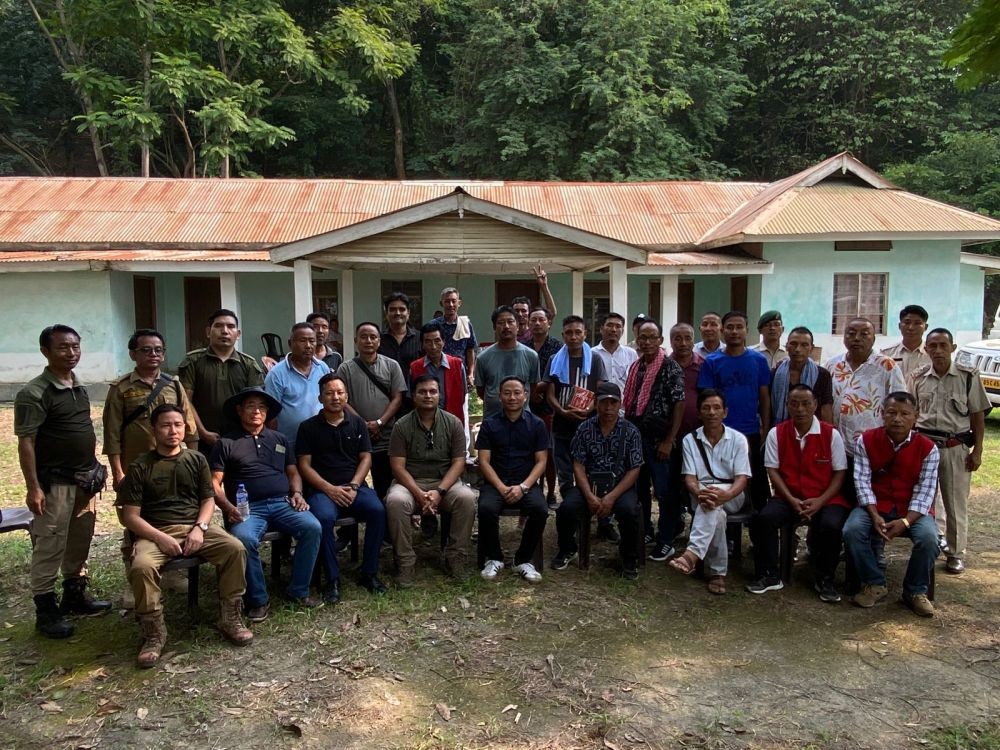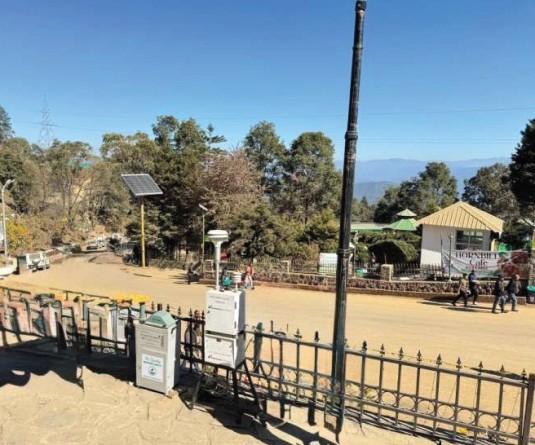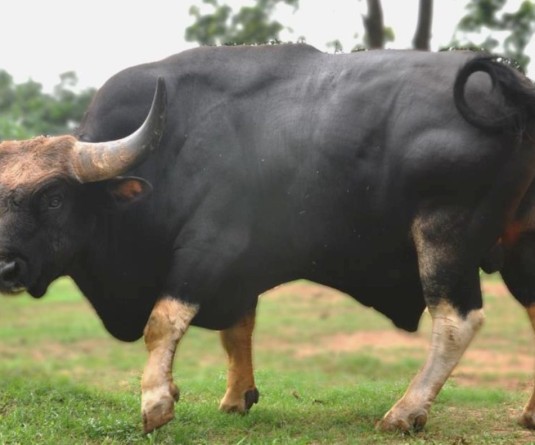Suman WM Sivachar DFO Wokha, Tokaho Kinimi, the Wildlife Warden and Elithung Odyuo, ACF Bhandari, in charge of Liphayan Beat along with the Forest Team and GBs and Chairman of the village’s. (MORUNG Photo)

Morung Express News
Wokha | October 16
The Wokha Forest Division convened a meeting in the presence of (DFO) Wokha, Suman W M Sivachar, and Tokaho Kinimi, the Wildlife Warden, to tackle the escalating issue of human-elephant conflict in the Liphayan Beat. The village headmen (GBs) and Chairman from several local villages attended the meeting held at the Governor’s Camp on October 16, where they addressed their grievances regarding the impact of human-elephant and discussed strategies to mitigate these conflicts and promote coexistence between humans and elephants in the region.
During the meeting, the village GBs and chairman expressed their deep frustrations over the escalating destruction caused by elephants in the region. Despite years of diligent work and substantial financial investment in their plantations, villagers lamented the devastating losses to their crops, which have left them without a source of income.
The villagers reported that elephants are now venturing alarmingly close to their homes, showing a concerning disregard for traditional deterrents such as firecrackers. This change in behaviour has intensified their fears for both their livelihoods and safety. They also urged the concerned authorities to take immediate action to address the situation before escalate further out of control.
446 elephants in Nagaland
Wildlife Warden Tokaho Kinimi provided an overview of the state’s elephant population and the affected areas. He reported that the 2017 census recorded 446 elephants in Nagaland, and a new census is scheduled to take place soon. The major conflict zones include Peren, Dimapur, Newland, Mokokchung, Wokha, Zunheboto, Longleng, and parts of Mon district.
Kinimi explained that elephants are a Schedule I species under the Wildlife Protection Act, with severe penalties for killing them. He highlighted that elephant habitats, which once spanned over 150 square kilometers, have now shrunk to less than 50 square kilometers due to farming and plantations. This reduction in habitat has forced elephants to seek food in human settlements, as each elephant requires approximately 50 kilograms of food daily. To address the issue, Kinimi mentioned a state action plan that has been submitted, though it is still pending approval, as well as plans for an elephant corridor project to facilitate safe movement for the animals.
Increasing conflict due to habitat fragmentation
Suman WM Sivachar, (DFO) Wokha, while addressing the gathering at the meeting, acknowledged the ongoing human-elephant conflict in the region and also cited the significant challenges faced by the department, particularly understaffing.
He emphasised that according to the 2017 All India Synchronized Elephant Estimation, Nagaland has 446 elephants, with an estimated 160 to 180 residing in Wokha district. He attributed the increasing conflict to habitat fragmentation, a consequence of agricultural expansion and highway construction along the Assam-Nagaland border during the 1970s and 1980s, thus trapping many elephants in the Doyang Valley, leading to frequent encounters with the villagers in the area. He also emphasised the importance of balancing wildlife conservation with community needs, highlighting that collaborative initiatives are essential for reducing conflict and ensuring the safety of both elephants and local residents.
Furthermore, in response to concerns raised by villagers, Sivachar reassured them that the state government is actively working to address the understaffing issue within the department, with recruitment efforts currently underway.
Elithung Odyuo, ACF Bhandari, in charge of Liphayan Beat, called for a collective solution, urging the villagers to cooperate with the department. He assured them that the department is working on a resolution and emphasized the importance of community support in managing the conflict.
In addition to the discussions, the wildlife wing trained the villagers on techniques to deter elephants both during the day and at night, demonstrating practical methods to protect their crops and homes from elephants.






